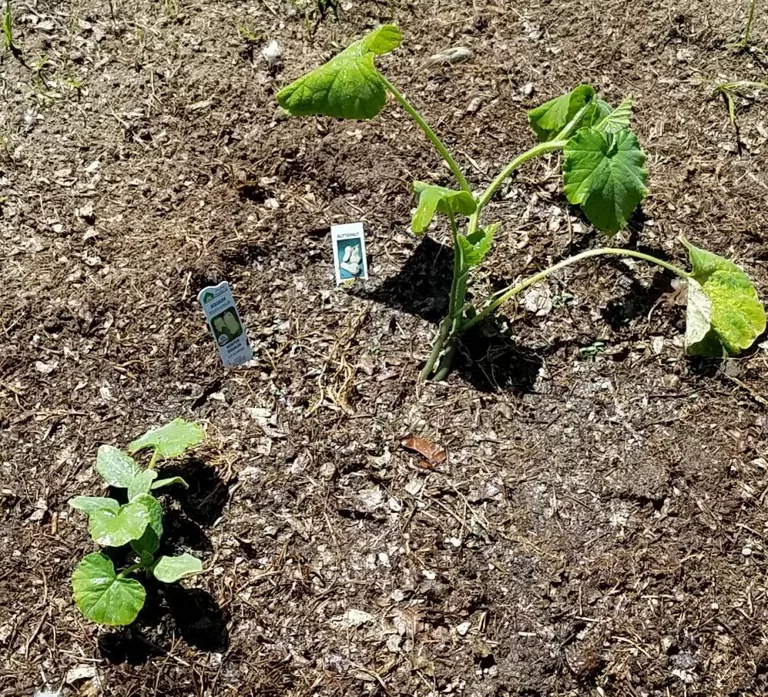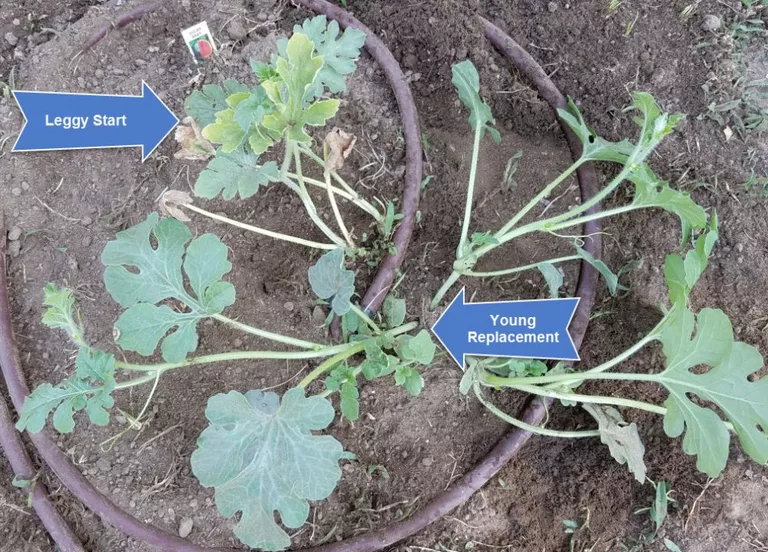I believe that gardening is a series of annual experiments, with lot's of opportunities to fail and succeed. Sometimes I intentionally "test" one theory against another, and sometimes nature forces that test on me.

This year I bought, against my better judgement, some very leggy veggie starts from the local "we do it for charity" greenhouse.
Normally these guys have amazing veggie starts but this year they were just... leggy. I knew better when I put them in my wagon, but I thought to myself:
All these other people are buying them, how bad can they be?
Well... these ones turned out pretty bad. But all hope is not lost!
What Makes a Veggie Start Get Leggy
When you start veggies indoors in the spring it's always a game of "When do I think the last frost will be?" Ideally you time it just right so that the start is ready to be transplanted the same week that the ground is ready to receive the plant. If you start your starts too early they end up sitting in 6 packs too long and grow longer than you want them to. You have leggy starts.
Another cause of leggy starts is not enough light. The plant grows long while seeking the light and ends up week as a result.
It seems like some plants can recover nicely from getting leggy as a start, and some can not. Tomatoes, for example, can be planted deeper than their bottom course of leaves and they'll be quite happy to put on new roots right from the stem. Peppers, onions, leeks, peas can all handle getting a little leggy as starts before being transplanted.
In the case of these cantaloupe pictured above I don't think it will turn out quite as well. The stems for the leaves are so long that the leaves wilt in even mild sun. When they are wilted they are not feeding the plant like they should so the plant suffers and ultimately gets stunted.
In order to ensure that I get some delicious cantaloupe this year I've hedged my bets and planted a second planting in the same mound. You can see them in the picture near the bottom with lighter green leaves. Only this time I was sure to get short, properly timed starts from the less altruistic yet more commercial nursery in town. It's a win-win solution for me. I'll let the 2 plants compete, keep the winner, and compost the loser. Not only do increase my odds of a good cantaloupe harvest but I also get to do another garden experiment this year.
I also added some additional plants for my butternut squash and crimson sweet watermelons.

Leggy Starts vs. Compact Starts
Who will win; the leggy start with a few weeks of extra growth at transplant time, or the compact start planted later but grown with adequate light and water and timed to be ready to plant right as the ground warms up.
My guess: the shorter, younger starts are going to pass the leggy, older starts by really fast, perhaps within a couple of weeks. I'll post a follow-up in about a month. Stay tuned!
Update 1 Month Later
The results are in! In absolutely no cases did the leggy starts do better than the compact replacementÃÂ starts. In some cases the leggy starts did roughly as good as the replacements, but never did they do better.
Here's a picture of my sugar baby watermelon starts as an example. The leggy starts are the ones on the left. The compact (not leggy) starts were planted a full week later and have totally passed the older starts by. These plants are younger yet bigger.

To be clear, I planted smaller plants 1 week later than the leggy plants and the small plants won.
Since your odds of doing better with not leggy starts are substantially better, in the words of my Dad: You only get one chance per year to grow these, so don't screw this up.
Results
Do not use leggy starts. Start over with compact starts. Even if you lose a week of growth the younger, more compact starts will out perform the leggy starts the majority of the time.
I hope that you've enjoyed this garden experiment; I sure have. I learned something important and I'm going to have a better garden this year as a result. Next year I'm not giving in and buying leggy starts. I'll hold out for compact plants because I know that will increase my odds of a larger, greener, more prolific garden.







































